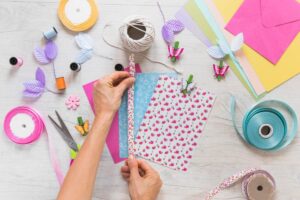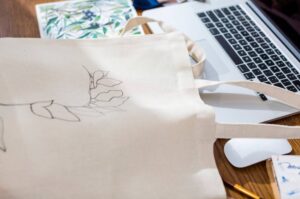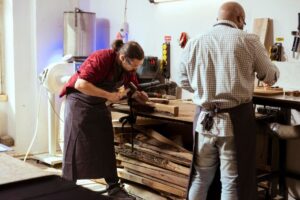The DIY & Crafts Blog
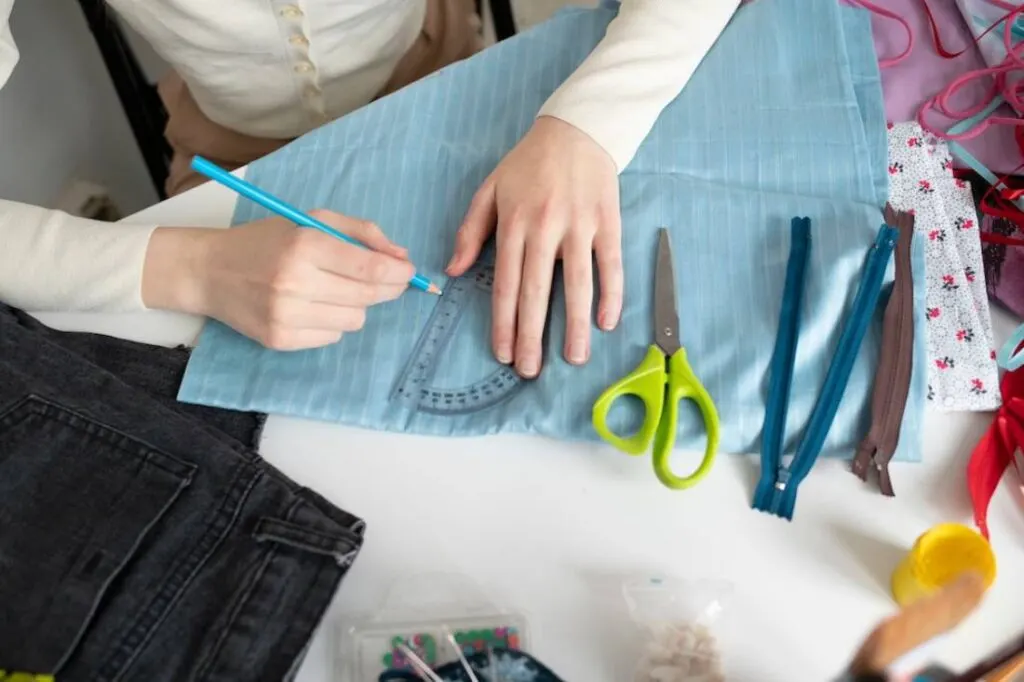
How to Sew and Style Your Own Clothes
Sewing your own clothes is a fantastic way to create unique, stylish outfits while developing a valuable skill. Whether you’re a beginner looking for sewing patterns for beginners or an experienced crafter searching for DIY sewing projects, making handmade garments allows you to express your creativity and customise your wardrobe.
From stylish dresses to trendy tops, learning how to sew gives you the freedom to choose fabrics, colours, and fits that suit your personal style. In this guide, we’ll explore essential sewing techniques, creative handmade clothing ideas, and step-by-step instructions to help you design and style your own clothes.
Pro Tip:
Always pre-wash and iron your fabric before cutting to prevent shrinkage and ensure precise measurements.
Quick Guide: How to Sew and Style Your Own Clothes
- Gather Supplies – Use a sewing machine, fabric scissors, measuring tape, and basic sewing materials.
- Start with Simple Projects – Sew an elastic waist skirt, DIY T-shirt, or wrap dress.
- Customise Your Designs – Add embroidery, lace, fabric paint, or decorative trims.
- Experiment with Styling – Pair handmade garments with accessories for a personalised look.
- Advance Your Skills – Explore pattern drafting, French seams, and zipper installations.
Important:
Choose beginner-friendly fabrics like cotton or linen when starting out. These are easier to sew and handle compared to slippery or stretchy fabrics.
Why Make Your Own Clothes?
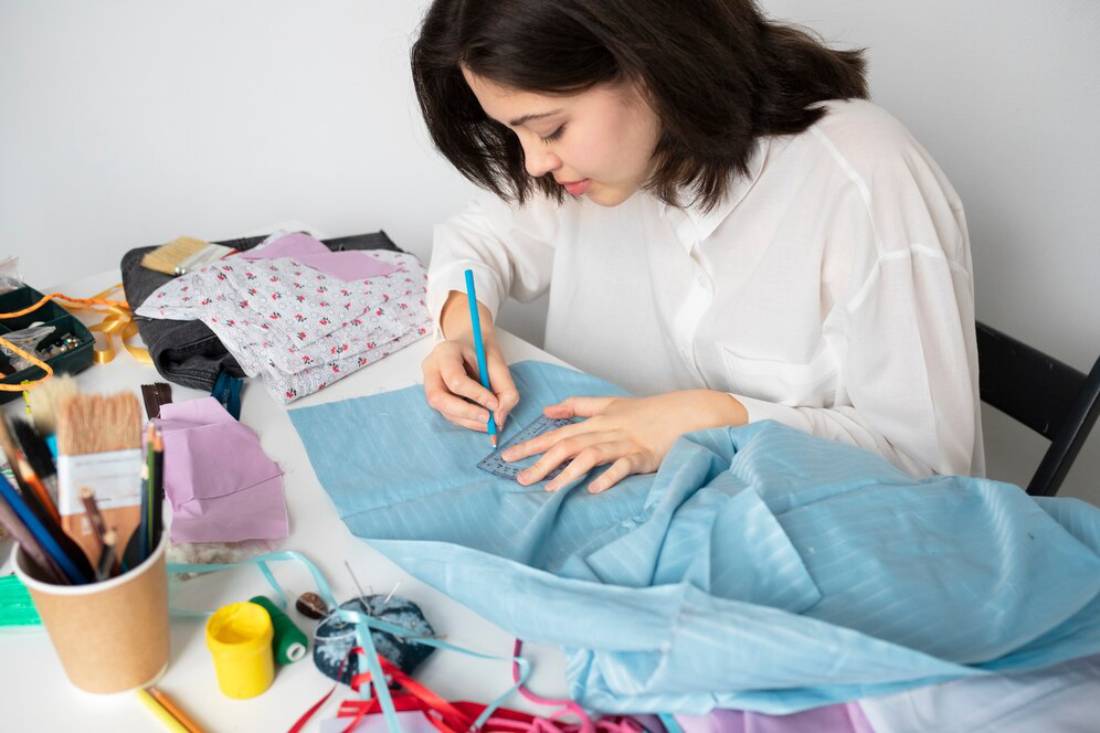
Before we dive into the sewing techniques, let’s explore the benefits of sewing your own clothes:
- Custom Fit & Style – Tailor clothing to your body shape and personal aesthetic, ensuring a perfect fit every time.
- Budget-Friendly – Save money by making designer-inspired outfits at a fraction of the cost while selecting high-quality fabrics.
- Sustainable Fashion – Reduce waste by using upcycled fabrics and creating durable garments that last longer than fast fashion items.
- Creative Expression – Bring your vision to life by choosing colours, prints, and textures that reflect your personality.
- Unique Wardrobe – Stand out with one-of-a-kind outfits that you won’t find in stores, adding exclusivity to your fashion collection.
- Skill Development – Sewing improves fine motor skills, patience, and problem-solving abilities, making it a rewarding lifelong hobby.
Essential Sewing Tools and Materials
Before starting your DIY sewing projects, gather these essential tools to ensure a smooth and enjoyable sewing experience:
Tools:
- Sewing machine – A beginner-friendly machine with basic stitch options is ideal for starters.
- Fabric scissors – Sharp scissors specifically designed for cutting fabric ensure clean, precise cuts.
- Measuring tape – Essential for taking accurate body measurements and ensuring the right fit.
- Seam ripper – Helps correct mistakes and remove stitches easily.
- Straight pins and pincushion – Keep fabric layers in place while sewing.
- Fabric chalk or marking pen – Assists in marking cutting lines and stitch placements.
- Iron and ironing board – Pressing seams make your garments look more professional.
Materials:
- Cotton, linen, or jersey fabric – Beginner-friendly and easy to work with.
- Thread in coordinating colours – Choose high-quality thread for durable stitching.
- Elastic, buttons, zippers, or snaps – Essential for closures in skirts, dresses, and tops.
- Interfacing – Provides structure and reinforcement for collars, cuffs, and waistbands.
- Pre-made sewing patterns for beginners or custom-drafted patterns – Guide you in cutting fabric accurately.
DIY Sewing Projects for Beginners
1. Simple Elastic Waist Skirt
A beginner-friendly handmade clothing idea that’s stylish, comfortable, and easy to sew.
Steps:
- Measure and cut fabric – Determine your desired length and add extra seam allowances.
- Sew the side seams – Fold the fabric right sides together and stitch along the sides.
- Create the waistband – Fold over the top edge, leaving space to insert elastic.
- Insert elastic – Use a safety pin to thread elastic through the waistband and sew the ends together.
- Hem the bottom – Fold the bottom edge, press with an iron, and sew a neat hem.
2. DIY T-Shirt from Scratch
Make a comfortable, casual T-shirt using a basic sewing pattern for beginners and soft stretch fabric.
Steps:
- Choose a soft knit fabric – Jersey or cotton blends work well for T-shirts.
- Cut out front and back panels – Use an existing T-shirt as a template or follow a pattern.
- Sew shoulder seams – Attach the front and back pieces at the shoulders using a stretch stitch.
- Attach sleeves – Pin and sew sleeves to the main body, ensuring even placement.
- Sew side seams – Close the sides from the armpit to the hem.
- Finish neckline and hem – Fold and sew to create a professional, clean finish.
3. Stylish Wrap Dress
A flattering DIY sewing project that suits all body types and adds a chic, elegant touch to your wardrobe.
Steps:
- Cut out wrap dress pattern pieces – Bodice, skirt, sleeves, and tie belt.
- Assemble bodice – Sew shoulder and side seams, ensuring a snug fit.
- Attach skirt to bodice – Gather or pleat the skirt for added volume.
- Add a waist tie – Secure the wrap closure with fabric ties or a belt.
- Hem and finish edges – Press seams and use bias tape for a polished look.
Customising Your Handmade Clothing
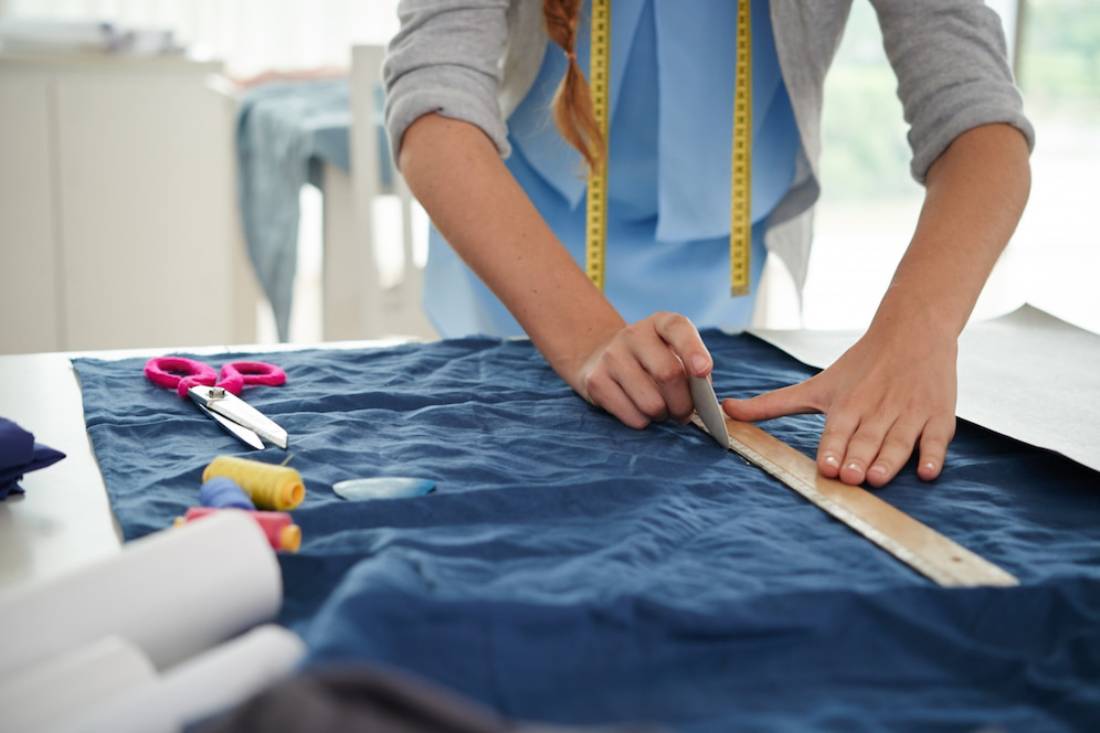
Once you’ve sewn your garment, add finishing touches to personalise your look and make your outfit stand out.
Fabric Painting and Embroidery
- Use fabric paint to create artistic designs such as florals, geometric patterns, or abstract prints.
- Add embroidery for a unique and textured effect, using contrasting thread for a pop of colour.
- Try stencilling patterns onto fabric before sewing to create custom prints.
Decorative Elements
- Sew on lace trim, buttons, or beads to enhance the aesthetic appeal.
- Add ruffles, pleats, or gathering details to skirts and sleeves for extra volume.
- Experiment with contrasting fabrics for bold designs, such as patchwork or colour blocking.
Styling Handmade Clothes
- Pair handmade tops with high-waisted jeans for a trendy, casual look.
- Layer custom skirts with stylish accessories like belts, scarves, and statement jewellery.
- Wear handmade dresses with ankle boots or heels for a chic, polished outfit.
- Mix and match handmade clothing with existing wardrobe pieces to create versatile ensembles.
Advanced Sewing Techniques to Explore
Once you’re comfortable with beginner projects, challenge yourself with these advanced techniques:
- Draping – Shape fabric directly on a mannequin to create couture-inspired designs.
- Pattern Drafting – Learn how to draft your own custom sewing patterns for a perfect fit.
- French Seams – Create professional, durable seams with a clean interior finish.
- Zipper Installation – Master different types of zippers, including invisible zippers for seamless closures.
- Lining and Underlining – Improve garment structure and comfort with lining techniques.
Frequently Asked Questions (FAQ)
1. What is the easiest clothing item to sew for beginners?
An elastic waist skirt is a great beginner project because it requires minimal sewing and no complex fastenings.
2. What fabrics are best for DIY clothing?
Cotton, linen, and jersey fabrics are ideal for beginners due to their ease of handling and sewing.
3. Can I sew clothes without a sewing machine?
Yes, but it will take longer. Hand-sewing is possible using basic stitches like the backstitch for strong seams.
4. How do I ensure my handmade clothes fit well?
Take accurate body measurements, use a sewing pattern, and make a test garment (muslin) before cutting the final fabric.
5. How can I make my handmade clothes look professional?
Press seams with an iron, use high-quality thread and finish raw edges with techniques like French seams or serging.
Create Your Own Unique Wardrobe: Start Sewing Today!
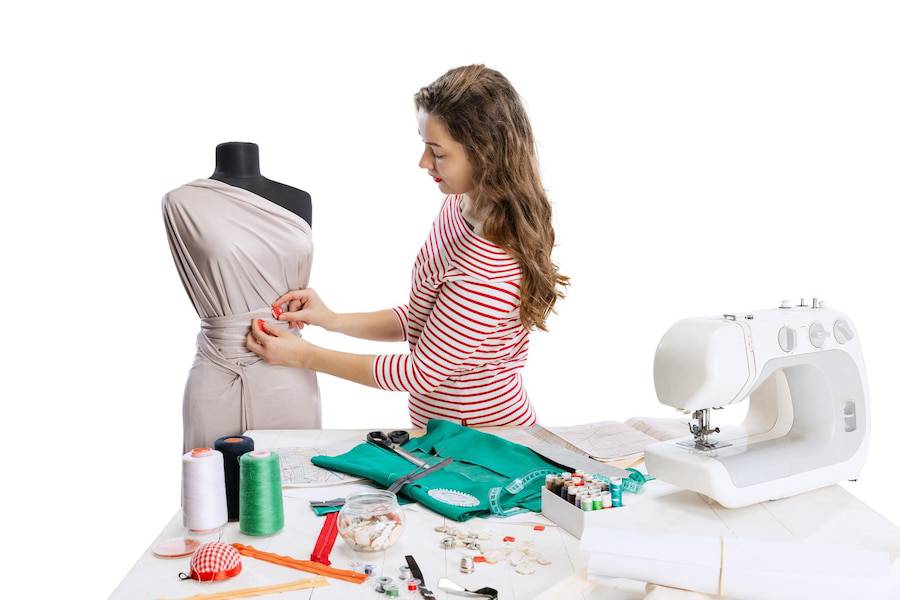
Sewing your own clothes is an exciting and rewarding way to build a unique wardrobe. Whether you start with sewing patterns for beginners or dive into advanced DIY sewing projects, the possibilities for creativity are endless. The ability to create handmade clothing ideas allows you to explore new styles while improving your sewing skills.
Ready to get started? Grab your sewing kit, fabric, and pattern, and begin exploring the world of custom fashion today! Looking for more sewing inspiration? Subscribe to our newsletter for exclusive tutorials, tips, and sewing patterns!



